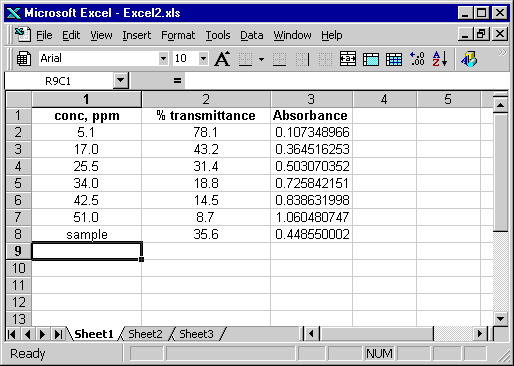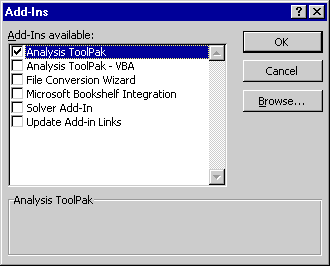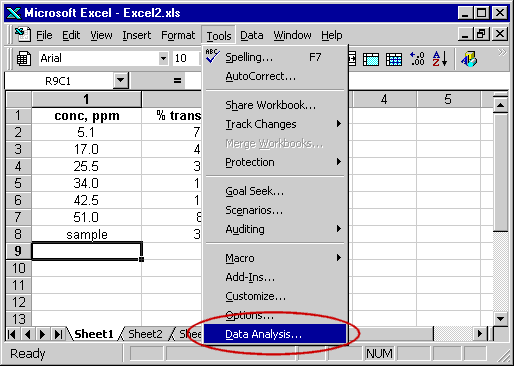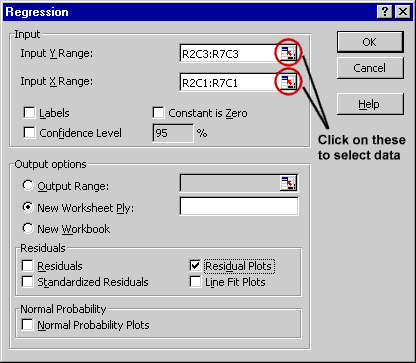Linear Least-squares Regression in Excel
In the previous two Excel tutorials, we have discovered two ways to obtain
least-squares estimates of the slope and intercept of a best-fit line:
- use the slope() and intercept() functions
- add a trendline to a scatterplot
Both of these methods are quick and useful, but they are mere toys compared
to the method outlined in this tutorial: using Excel's Analysis
ToolPak add-in. Here is a screenshot of the calibration data (click
to download the file):

First let's check that the add-in has been installed. Go to the Tools
| Add-Ins sub-menu; you should see the following screen.

Make sure that the Analysis ToolPak is checked. Doing so
will add a Data Analysis item to the Tools menu.

Select the Data Analysis item, and then scroll down and select
Regression

A dialog box will pop up. Select the ranges of the X and Y
data; you can click on the funny little icons to select these ranges.
It is also often a good idea to look at one of the residuals plots.

After clicking 'OK' a sheet will be created with statistical information
about the linear regression.

Click on the above image to download the Excel file. If you chose that
particular option, a plot of the residuals will appear to help identify
outliers and evaluate the appropriateness of the chosen regression model.

 |
Watch the sequence of events leading to these last screen-shots |
|



